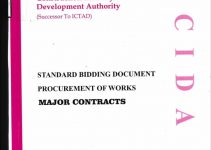The design brief is the project management document that consists of information about the client and client’s requirement such as space, use, look and comfort building. It outlines business objectives and associated design strategies. It is connected to the design and construction contract. The document describes the work to be built to the contact amount.
A thorough and design brief is a critical part of the design process. It helps develop trust and understanding between the client and designer – and serves as an essential point of reference for both parties.
Features of a standard design brief
- Brief (that is why it is called a brief!) – no longer than 2 or 3 pages.
- Easy to read – Content subdivided into various sections with clearly-defined headings, use of short bullet points instead of narrative text
- Easy to print – Standard size (A4)
- Easy to share – Created in a way that it can be sent electronically to others collaborating on the project (not hand-written or engraved on stone tablets)
- Simple and well-organized
Content of a design brief
- Project name
- Short description (summary) of project
- Description of business
- Project goals and objectives
- Target audience
- Details that are necessary to the designer with (photos, website screen shots, diagrams, etc.
- Project specifications and format (these may change as the project develops)
- Main messages and objectives
- Design budget
- Production budget
- Timeline/deadline
Importance of design brief
With a detailed design brief, both client & contractor can save time and money from the get-go. It allows both the designer and the client to gain an expectation of the sort of site that will ultimately be delivered.
Budget
Outlining and discussing the project budget at briefing ensures that reasonable allocations are made for various aspects of the project. Using an experienced designer allows these figures to be assessed at the outset to ensure that the client funds are adequate for the scope outlined in the brief. Whilst sometimes budgets might be limited, it ensures that the scope of the project matches the funds available.
Sample preliminary Budget for a two story house
| Work Item | Time Duration | Cost |
|---|---|---|
| Footing | ||
| foundation | 2 months | LKR 350,000 |
| Floor | ||
| Walls | LKR 950,000 | |
| Flat work (1stfloor) | ||
| Ceiling | ||
| Roof | ||
| Plumbing | ||
| Electrical | ||
| Mechanical | ||
| Outdoor | ||
| Painting | ||
| Bathrooms | ||
| Finish works |
The design teams
In the past, designers were usually engaged directly by clients (Traditional Contracts). Due to Development of procurement methods The Constructor Client‟ has emerged. It Combines design, cost, and delivery to offer clients greater certainty. The design process is managed by design managers. The role is to manage the design input but NOT to carry out the design themselves.
Role & Responsibilities of a design manager
- Manage working relationships within the design team
- Set the parameters
- Determine what will be produced at each stage
- Set up a system for information exchange
- Ensure timely delivery of information
Value of the building/Project
The value of a feature or part of the design must be considered against the overall parameters of the project
- Is it useful and functional?
- Environmental impacts of the building must be considered to look for sustainable solutions during construction, use and demolition.
- Remember, best value is NOT the lowest cost.
- Indefinable but essential
- It may be appearance, method of construction or the pleasure of using a building
- It may be aesthetic or functional
- It should illuminate and inspire
To confirm the value of the project & success is heavily depending on the formation of appropriate design brief. To make the process effectively contribution from all stakeholders is very vital.
© BasicCivilEngineering.com


